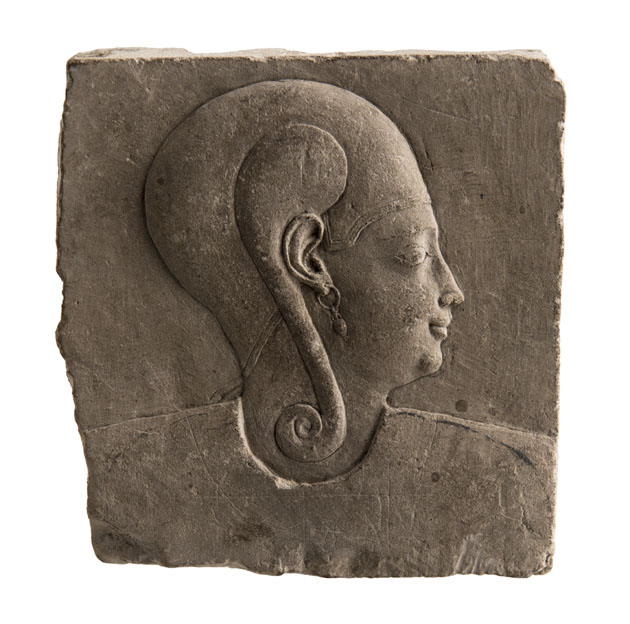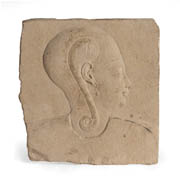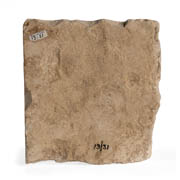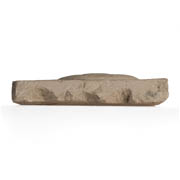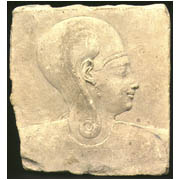Details
- Object type
relief carving
- Place Associated
Egypt (place made)
- Date
Ptolemaic Period (332-30 BC)
- Materials
limestone
- Dimensions
overall: 132 mm x 127 mm x 24 mm 703 g
- Description
-
Most of ancient Egyptian pictorial art showing images of Egyptian people was governed by strict rules of proportion with relative sizes of body parts calculated with a standard formula to the height of the figure. This standardised portrayal was not intended to a realistic portrait of an individual but an image of how the Egyptians considered the figure should be seen. The only time this was varied was with more realistic depictions of individuals with dwarfism such as the statue-group of the 5th Dynasty high official Seneb and his family. Therefore, any images, particularly those showing royalty or of religious significance would be carefully planned in advance.
Sculptors and stone masons would sometimes create models of images they wished to use in order to allow these to be scaled up for larger finished pieces. In this way, a master mason could create an image of idealised proportion which other less-experienced masons could reproduce. These often have the gridlines marking the canon of proportions and certain types may even have been specifically produced as votives. Other models were created as trial-pieces where those learning their trade would practise their craft before attempting to work on a larger scale where a mistake might not be easily rectified.
Some reliefs in museums and collections around the world have been removed from complete scenes as opposed to being discrete objects in their own right. These usually have chisel marks across the reverse indicating they have been cut from a larger block. In this case, the reverse does not show the signs of removal so this would suggest that this was originally a sculptor’s model, votive or trial-piece.
This relief on a roughly-cut square of limestone shows a young man wearing a tightly fitting skull cap with the “sidelock of youth”. This hairstyle with a single braid gathered to the side of the head, usually to the right, which denoted a young high-status individual or god. The god Horus as a Child or Harpocrates in Greek is often depicted in this way. The uraeus cobra which is commonly depicted on the brow of Harpocrates is absent suggesting that this is a depiction of a mortal, probably a prince.
This relief was purchased for the Burrell Collection in 1947 from a dealer who identified its previous owner as a man named Henry Gordon Bois. Bois’ family was were involved in tea production in Sri Lanka during the late nineteenth and early 20th centuries when the country was governed as part of the British Empire. The trade route from Sri Lanka to Britain ran through the Suez Canal in Egypt and Bois would have passed through Egypt many times. Egypt was nominally independent from 1882 until 1914 but in reality, British colonial administrators controlled the country. European clubs like the Turf Club and hotels like the Winter Palace, Luxor and Shepheards in Cairo catered exclusively for British officials and businessmen and foreign tourists. Antiquities dealers would acquire objects from ancient Egyptian tombs and town sites across Egypt and then sell them as souvenirs to the foreign guests who usually had no interest in recording accurate provenance information about their purchases.
H Gordon Bois may have acquired his collection of antiquities in this way or through the flourishing antiquities trade in Europe but unfortunately this information was not recorded when his collection was sold posthumously in 1947.
Provenance: Henry Gordon Bois 1946; Spink & Son, London 18 June 1947; from where purchased by Sir William Burrell
- Credit Line/Donor
Gifted by Sir William and Lady Burrell to the City of Glasgow, 1944
- Collection
Burrell Collection: Egyptian Items
- ID Number
13.31
- Location
Burrell Collection
